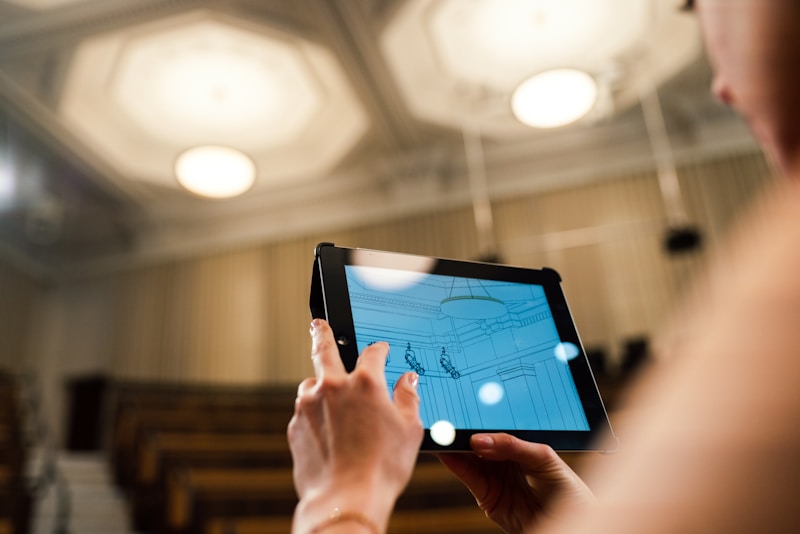Questions and Answers
What is distance education?
A form of education where the learner and teacher are separated by distance and time
What are MOOCs?
Massive open online courses
Which university was the first to offer distance learning degrees?
The University of London
What is the difference between synchronous and asynchronous learning?
Signup and view all the answers
What is the main advantage of distance education?
Signup and view all the answers
What is a major barrier to effective distance education?
Signup and view all the answers
What is transactional distance?
Signup and view all the answers
What are online credentials?
Signup and view all the answers
What is the source of this text?
Signup and view all the answers
Study Notes
Distance Education: A Summary
-
Distance education is a form of education where the learner and teacher are separated in both time and distance.
-
It has evolved with the advancement of technologies such as video conferencing, TV, and the Internet, and now usually involves online education.
-
Massive open online courses (MOOCs) are a recent educational mode of distance education.
-
The University of London was the first university to offer distance learning degrees, establishing its External Program in 1858.
-
The Open University in the United Kingdom was founded in 1965 and revolutionized the scope of the correspondence program, creating a respectable learning alternative to traditional education.
-
Athabasca University, Canada's open university, was created in 1970 and followed a similar pattern.
-
Distance learning has been impacted by the COVID-19 pandemic, with many schools moving to online remote learning through various platforms.
-
Internet technology has enabled many forms of distance learning through open educational resources and facilities such as e-learning and MOOCs.
-
Distance education technologies are divided into two modes of delivery: synchronous learning and asynchronous learning.
-
Synchronous learning requires a timetable and includes web conferencing, videoconferencing, educational television, and instructional television.
-
Asynchronous learning allows participants to access course materials flexibly on their schedules and includes mail correspondence, message board forums, e-mail, video and audio recordings, print materials, voicemail, and fax.
-
Distance learning can also use interactive radio instruction (IRI), interactive audio instruction (IAI), online virtual worlds, digital games, webinars, and webcasts, all of which are referred to as e-Learning.The Evolution and Benefits of Distance Learning
-
Distance education began with correspondence courses in the 1800s.
-
Physicist Daniel Q. Posin and Charles Wedemeyer were pioneers in distance education through televised and radio courses respectively.
-
The emergence of tele-courses in the 1970s paved the way for online courses today.
-
The widespread use of the internet has made distance learning easier and faster.
-
The first online courses for credit were offered in 1985 through Connected Education and the University of Toronto.
-
Enrollment in distance education courses has increased rapidly worldwide since 2000.
-
Online learning is available from many private, public, non-profit, and for-profit institutions worldwide.
-
Distance education can expand access to education and training, lessen institutional capacity constraints, and enable lifelong learning.
-
Distance learning offers students the opportunity to learn in ways that traditional classrooms cannot provide.
-
Distance education can provide equal access regardless of socioeconomic status, gender, race, age, or cost per student.
-
Distance learning can reduce the phenomenon of rural exodus.
-
Barriers to effective distance education include obstacles such as domestic distractions and unreliable technology, as well as students' program costs, adequate contact with teachers and support services, and a need for more experience.Challenges and Opportunities in Distance Education
-
Students prefer face-to-face communication over professor-mediated chat rooms and independent studies in distance education courses.
-
There is no evidence that large class size is always worse or that small class size is always better in online courses.
-
Distance learning programs may face institutional challenges and require different organizational needs.
-
Distance education has negative sides, including cost, time constraints, isolation of students, and high dropout rates.
-
Cultural differences between students and teachers and among students pose a complex challenge in distance education.
-
Electronic educational technology facilitates distance learning and independent learning through the use of ICT.
-
Transactional distance, resulting from the lack of communication between learner and teacher, is a significant issue in distance education.
-
Online credentials, such as digital badges and certificates, challenge the traditional paper credentials for skill or educational achievement.
-
Three forms of online credentials include test-based credentials, online badges, and online certificates.
-
A UNESCO article titled "Level-setting and recognition of learning outcomes: The use of level descriptors in the twenty-first century" is the source of this text.
-
The article is licensed under CC-BY-SA IGO 3.0.
-
Further reading and external links are available for more information.
Studying That Suits You
Use AI to generate personalized quizzes and flashcards to suit your learning preferences.
Description
Test your knowledge on distance education with our informative quiz! From the history and evolution of distance learning to its benefits and challenges, this quiz covers it all. Whether you're a student, teacher, or just interested in the topic, this quiz will provide valuable insights and increase your understanding of this growing field. Keywords: distance education, online learning, asynchronous learning, synchronous learning, MOOCs, tele-courses, barriers, benefits, challenges.




